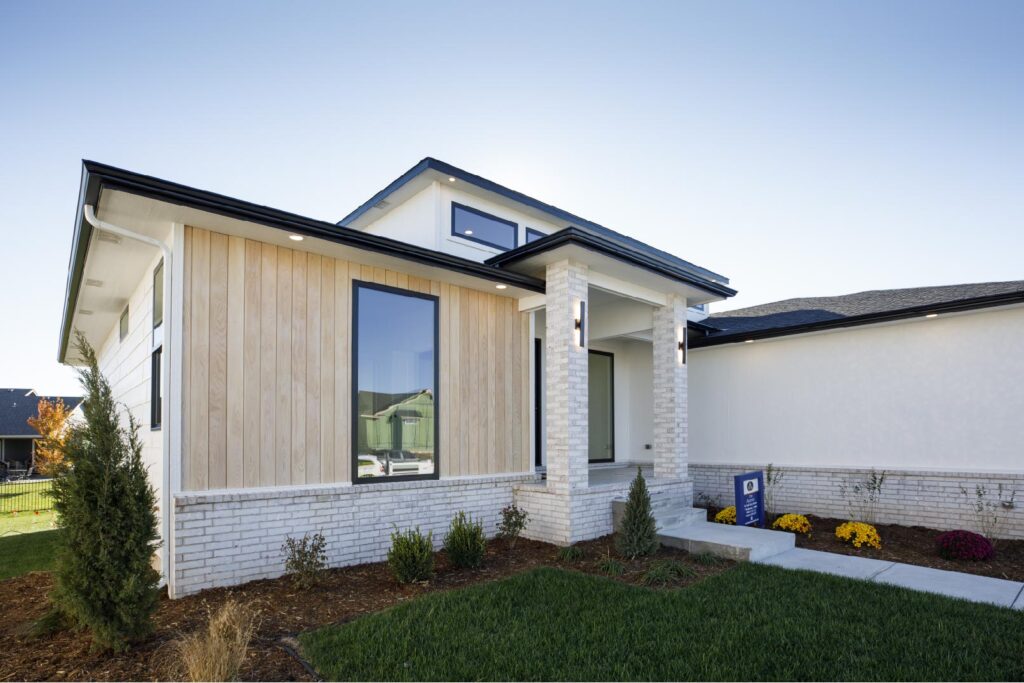As you build your custom home, your landscape needs to be an early priority. Landscaping is a key part of making your home your own, showing off your style, and is your warm greeting at the end of the day and to your guests. Well planned and installed landscaping can easily boost the value of your home and may encourage your neighbors to take on their own landscaping projects. Enjoying a great yard is one of the best parts of owning a home.
Set a Budget
Setting a landscape budget is often an overlooked part of the landscaping process. Decide early on how much you want to spend, both on materials and labor — determine how many plants you will need, what kinds of hardscape and/or mulch your project will require, as well as the costs for professional installation. Our designers can help get you in contact with area professionals to help guide you with estimating the cost of your landscaping. You can decide early on if there is extra budget to put into play or if you need to find places in which to pair down. Ultimately, setting a budget early on will help identify the possibilities and mitigate unnecessary expenses.
Planning
Whether you intend to hire part or all of the landscape work, or even tackle the project yourself, you should have a basic plan for how your landscape will be used, and how it will look. Do you need to consider outdoor entertaining spaces? Are you looking for privacy? Is there a need for added security? Maybe you are planning a swimming pool, patio, bold hardscaping or adding a water feature. What color combinations best fit your style? The answers to these questions will help you define the plans to your very own landscape design. Your preferences should drive the design process no matter who is drawing the plan — you or a contractor.
Prioritize Wisely
Be disciplined and stay focused as you talk with landscape professionals or work with garden centers. A master landscape plan will prove to be a helpful tool to keep your project on track and within budget. By prioritizing the design and installation process, you’re able to tackle bite-sized parts of the project that are beneficial both aesthetically and financially. Typically, it makes sense to work on the front yard first because it is the most visible part of the yard. Plant trees early in order to give them time to take root and grow, while incorporating smaller plants and decorative elements to accentuate the overall design. Something larger, such as a pool that is only used seasonally, would make sense to add later, if necessary. Regardless, set your priorities and stick to them.
Installation
Installing the landscape is mostly a straightforward process and generally starts by installing hardscapes (patios, decks, fountains, etc.). As those areas are finished and defined, the rest of the project will flow next with irrigation, lighting, trees and shrubs, perennials, sod, and will finish with annuals. There may be slight deviations based on your custom project, but keeping with a similar order will ensure that previously installed material is not compromised by upcoming work. If you decide to work with a landscape contractor, make sure to stay in constant contact regarding the progress and be sure to ask questions if there is something you don’t understand.
Maintenance
Once installed, there is a phase where plants and hardscapes all need to settle in. Make sure you pay close attention to the watering requirements of new plants and look up and understand the year-round maintenance for all of your newly installed plants, including pruning, fertilizing and winterization. New irrigation systems must be monitored to ensure they are providing enough coverage and are timed based on the season and your grass type. Hardscapes like decks, pavers, retaining walls and similar elements should be visually inspected regularly several times in the first year after installation, checking for defects and/or cracks that may have happened.
Enjoy!
Though the work may seem tough at times, the process of creating a new landscape is rewarding in so many ways. Following a good plan, executing wisely and following up will ensure you pay a fair price for a landscape that stays healthy and functional, does exactly what you need it to do, and can be enjoyed for many years to come!
